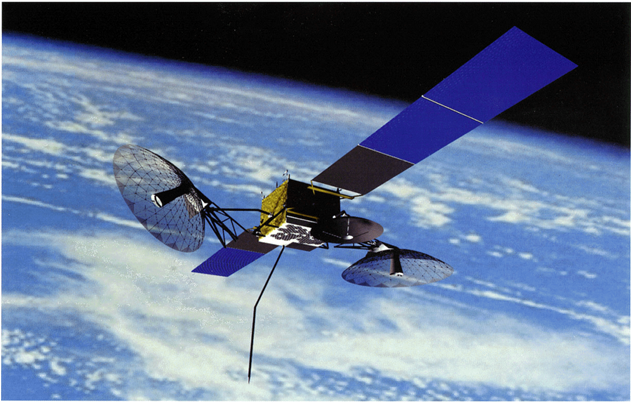NASA’s Tracking and Data Relay Satellite-9 (TDRS-9), launched in March 2002, has reached the end of its mission having exceeded its planned 15-year mission life.
NASA’s Space Communications and Navigation (SCaN) program network operations team first observed intermittent connectivity issues with the communications satellite in August. The team’s troubleshooting efforts and assessments have led to the conclusion TDRS-9 will not regain its ability to consistently relay data between spacecraft and ground stations. As a result, NASA is retiring TDRS-9 after raising it to a new permanent position and turning off its transmitters.
TDRS-9 is part of a constellation of ten satellites in geosynchronous orbit that comprise the space segment of NASA’s Near Space Network (NSN). The NSN, consisting of TDRS as well as ground antennas and stations, provides critical space communications and navigation services to NASA missions and other users, including two-way voice and video transmission with crews aboard the International Space Station and the downloading and worldwide distribution of scientific data from Earth-observing satellites.
With multiple TDRS spacecraft currently in operation to support customer missions, TDRS-9 has most recently been used for testing upgrades to the NSN and is not currently supporting active missions.
During nearly 40 years in operation, the NSN and TDRS fleet have been pivotal in providing communication services for NASA missions. The fleet will continue to support many key launches over the next decade, including NASA’s exploration of the Moon with the agency’s Artemis missions.
NASA continuously evaluates its communications and navigation networks to ensure support for the agency’s endeavors, including human and robotic exploration deeper into space. As part of a long-term strategy to transition away from building, maintaining, and operating its own systems, SCaN formulated the Communications Services Project (CSP) at NASA’s John H. Glenn Research Center in Cleveland. CSP is partnering with six industry providers to demonstrate the viability of commercial relay systems to support NASA’s space-based users. These demonstrations are expected to be completed in 2026. Commercially provisioned communications services will allow NASA to focus on research and development of the next generation of technology and capabilities for space communications and navigation.



























